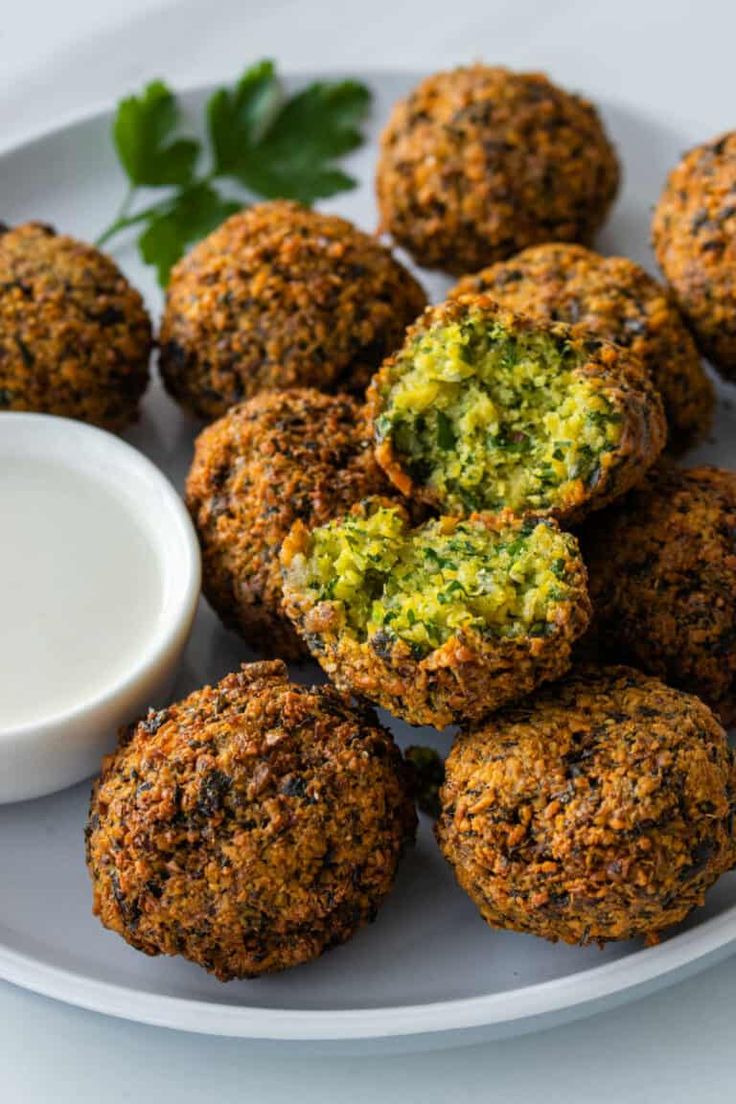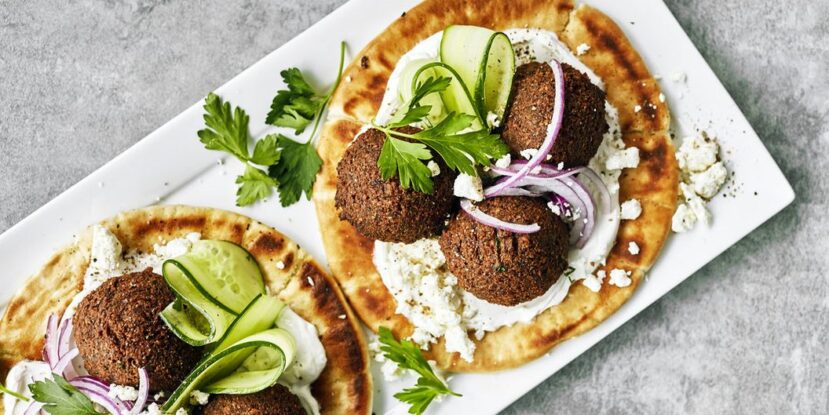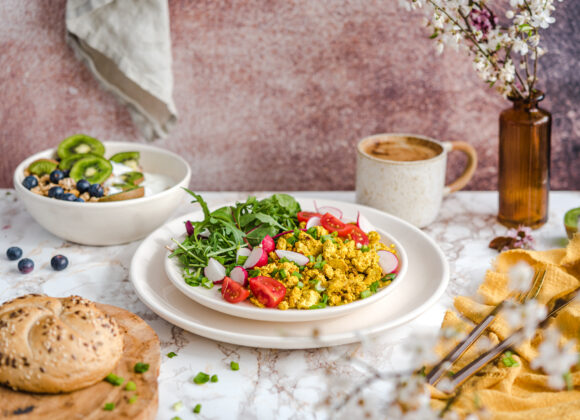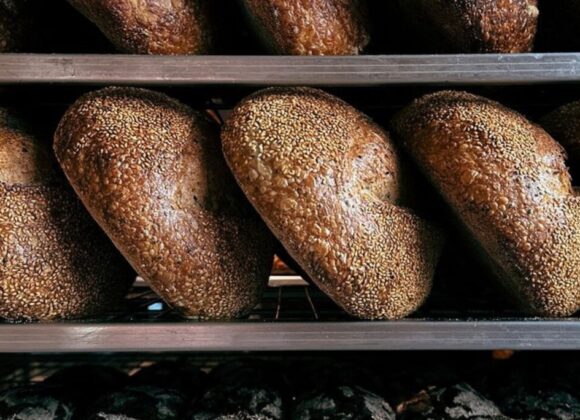Falafel, skromny, ale powszechnie ceniony element kuchni bliskowschodniej, to coś więcej niż tylko pyszna, smażona na złoto przekąska. To tradycyjne danie, które podbiło podniebienia na całym świecie. Skąd pochodzi? Jak ewoluował smakowo i dlaczego? Odpowiadamy poniżej!
Historia Falafela
Jak to bywa w kulinarnym świecie – nie ma jednej, przyjętej historii falafela. Historycy kulinarni i antropolodzy często nie zgadzają się co do jego dokładnego pochodzenia, jednak znaczna ilość dowodów wskazuje, że pochodzi on z Egiptu. Uważa się, że Koptowie, egipska wspólnota chrześcijańska, początkowo przyrządzali to danie z fasoli fava i nazywali je „ta’amiya”. Danie to służyło jako zamiennik mięsa w okresie chrześcijańskiego postu zwanego Wielkim Postem. Od samego początku zyskiwał na popularności, dlatego szybko został zauważony, w roli przekąski, także na Bliskim Wschodzie i krajach Morza Śródziemnego. Przemierzając te regiony, przeszedł kilka transformacji, ewoluując, aby dostosować się do gustów osób zamieszkujących dane terytorium.

fot. Pinterest
W regionach takich jak Liban, Syria i Palestyna, gdzie ciecierzycy było więcej, zastąpiono fasolę fava właśnie nią – jako główny składnik falafela. Jemen wprowadził odmianę do tradycyjnego falafela, dodając ostrą paprykę dla pikantnego wymiaru. Libańscy kucharze przekazali swoje upodobanie do nasion sezamu, nadając falafelowi wyjątkową chrupkość i profil smakowy. Gdy falafel dotarł do Lewantu, przeszedł już szereg przemian. Przepis został dopracowany i dostosowany tak, aby uzupełniał lokalne podniebienia, a falafel przybrał powszechnie rozpoznawalny okrągły kształt, odbiegając od oryginalnej egipskiej formy przypominającej krążek. Ewolucja Falafela jednak nie zatrzymała się w Lewancie. Kiedy w XIX i XX wieku ludność Bliskiego Wschodu zaczęła migrować po całym świecie, zabrali ze sobą swoją kuchnię, w tym właśnie ceniony falafel. To proste danie otoczone miękkim chlebem pita, uzupełnione świeżymi warzywami i polane sosem tahini szybko zyskało światową popularność.
Fenomen wegetariańskiego przysmaku
Dzięki globalnemu zasięgowi falafel stał się gastronomicznym symbolem kuchni bliskowschodniej, reprezentującym kulinarną tożsamość wielu krajów. Pomimo złożonej tkanki geopolitycznej regionu, falafel stanowi jednoczący czynnik kulturowy. Od Kairu po Bejrut, od Jerozolimy po Damaszek, falafel stanowi wspólne dziedzictwo kulinarne, które łączy granice.
Wraz z rosnącą popularnością diet wegetariańskich i wegańskich oraz światowym trendom street foodu, ten bliskowschodni produkt znalazł swoje miejsce w niezliczonych kartach menu na całym świecie. Pomimo niepozornego składu falafel ma ogromne znaczenie w kuchni światowej jako dowód historii i ewolucji kulinarnej Bliskiego Wschodu.
Jak przygotować falafel?
Historię mamy za sobą, przejdźmy więc do praktyki! Oto klasyczny przepis na wegetariański falafel:
Składniki:
- 1 szklanka ugotowanej ciecierzycy
- 1/2 dużej, grubo posiekanej cebuli
- 2 łyżki drobno posiekanej świeżej natki pietruszki
- 2 łyżki drobno posiekanej świeżej kolendry
- 1 łyżeczka soli
- 1/2 łyżeczki suszonej ostrej czerwonej papryki
- 4 ząbki czosnku
- 1 łyżeczka kminku
- 1 łyżeczka proszku do pieczenia
- 4-6 łyżek mąki pszennej
- olej roślinny do smażenia
Przygotowanie:
- Ugotowaną ciecierzycę zmiksuj z cebulą, pietruszką, kolendrą, solą, ostrą papryką, czosnkiem i kminkiem w robocie kuchennym, aż wszystkie składniki się połączą. Ważne: masa nie może być zmielona na puree!
- Do masy dodaj proszek do pieczenia i 4 łyżki mąki pszennej i wymieszaj. Jeśli ciasto będzie zbyt lepkie – dodaj dodatkową ilość mąki, jednak nie przesadź z jej ilością, aby falafel nie miał mącznego posmaku. Masa na falafel jest gotowa, gdy po formowaniu małej kulki ciasto nie klei się do dłoni.
- Przykryj gotową masę suchą ściereczką i wstaw do lodówki na minimum 1 godzinę.
- Po schłodzeniu z powstałej masy uformuj kulki wielkości orzecha włoskiego. W głębokim garnku lub woku rozgrzej olej i usmaż próbną kulkę falafela. Jeśli się rozpadnie, dodaj do mieszanki trochę więcej mąki. Gdy konsystencja będzie już odpowiednia, smaż około sześciu kulek na raz przez kilka minut z każdej strony, aż staną się złotobrązowe.
- Odsącz usmażone falafele na ręczniku papierowym, aby pozbyć się nadmiaru tłuszczu. Gotowe!
My szczególnie polecamy falafele podane z pitą, sosem jogurtowym i świeżymi warzywami. Smacznego!










 Młodszy specjalista ds. komunikacji marketingowej i PR.
Młodszy specjalista ds. komunikacji marketingowej i PR.


 Absolwent Uniwersytetu Warszawskiego oraz Szkoły Głównej Gospodarstwa Wiejskiego. W branży HoReCa od ponad 10 lat. Przez lata związany z Grupą Trip, Sobienie Królewskie Golf and Country Club oraz restauracją Florentin w Warszawe.
Absolwent Uniwersytetu Warszawskiego oraz Szkoły Głównej Gospodarstwa Wiejskiego. W branży HoReCa od ponad 10 lat. Przez lata związany z Grupą Trip, Sobienie Królewskie Golf and Country Club oraz restauracją Florentin w Warszawe. Absolwentka Wydziału Architektury Politechniki Warszawskiej na kierunku Architecture for Society of Knowledge oraz Komunikacji Wizualnej na Politecnico di Milano. Specjalistka od budowania nastroju. Doświadczenie zdobywała w kraju i zagranicą podczas licznych warsztatów międzynarodowych (Sevilla, Lizbona, Florencja), stypendium na La Sapienza (Rzym) oraz pracując m.in. w Carmi e Ubertis i ADM Milano.
Absolwentka Wydziału Architektury Politechniki Warszawskiej na kierunku Architecture for Society of Knowledge oraz Komunikacji Wizualnej na Politecnico di Milano. Specjalistka od budowania nastroju. Doświadczenie zdobywała w kraju i zagranicą podczas licznych warsztatów międzynarodowych (Sevilla, Lizbona, Florencja), stypendium na La Sapienza (Rzym) oraz pracując m.in. w Carmi e Ubertis i ADM Milano.








 Menedżer z wieloletnim doświadczeniem w branżach kosmetycznej, spożywczej, dziecięcej. W trakcie swojej kariery związany z firmami takimi jak: L’Oreal, Samsung, Danone-Nutricia, Unilever. W ciągu swojego życia zawodowego odpowiadał między innymi za rozwój sprzedaży i contentu eCommerce w Polsce i krajach Europy Środkowo-Wschodniej.
Menedżer z wieloletnim doświadczeniem w branżach kosmetycznej, spożywczej, dziecięcej. W trakcie swojej kariery związany z firmami takimi jak: L’Oreal, Samsung, Danone-Nutricia, Unilever. W ciągu swojego życia zawodowego odpowiadał między innymi za rozwój sprzedaży i contentu eCommerce w Polsce i krajach Europy Środkowo-Wschodniej. 

























































